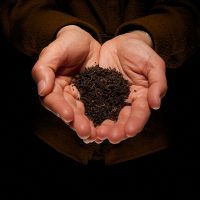 Abstract
Abstract
Interest in the habenula has greatly increased in recent years. The habenula is a small brain structure located posterior to the thalamus and adjacent to the third ventricle. Despite its small size, the habenula can be divided into medial and lateral nuclei that are anatomically and transcriptionally distinct. The habenula receives inputs from the limbic system and basal ganglia primarily via the stria medullaris. The fasciculus retroflexus is the primary habenular output to the midbrain.
This fasciculus retroflexus output from the lateral habenula governs the release of glutamate onto gabaergic cells in the rostromedial tegmental nucleus. The resulting GABAergic release inactivates dopaminergic cells in the ventral tegmental area/substantia nigra compacta. Through this process, the habenula controls dopamine levels in the striatum. Thus, the habenula plays a critical role in reward and reward-associated learning. The lateral habenula also modulates serotonin levels and norepinephrine release, while the medial habenula modulates acetylcholine.
The habenula is a critical crossroads that influences the brain’s response to pain, stress, anxiety, sleep, and reward. Dysfunction of the habenula has been linked to depression, schizophrenia, and drug addiction. This review is focused on the possible relationship between the habenula and drug addiction.
Read More Here
Kola nut (Cola nitida) is one of the foods consumed for socio-cultural reasons in West Africa sub-region. The caffeine contents are alleged to be of benefit to many people of different occupations. In this study, the perceived benefits of kola nut were assessed among long distance driver in Ojoo Motor Park, Ibadan, Nigeria.
One hundred and one respondents were selected through stratified sampling method and were given questionnaires. Ages of the respondents ranged from 18 – 65 years. The results showed that 69% of respondents consumed kola nut daily, especially when driving. Majority-(75%) of the subjects believed kola nut consumption reduced fatigue, stress and stimulates body function to perform better. In addition, 73% believed kola nut increased mental activities, dispels sleep and hunger (86%), suppresses hunger and makes journey faster (85%), and makes one see clearly (80%).
However, the majority of them (63%) agreed that kola nut consumption gives an unsightly dull brown colour to the teeth, caused teeth ache and decay (33%), causes insomnia and therefore general body discomfort (50%) and 66% believed it frequent consumption caused high body temperature. It was discovered that the perceived discomforts associated with kola nut consumption could not deter the subjects from consuming kola nut as 63% of them said kola nut staining of teeth could be prevented by brushing teeth immediately after consumption or brushing three times daily.
But there was no evidence to show that the drivers did brush teeth immediately after consuming kola nut or three times as claimed, as up to 83% of them did stop only once in restaurants in their usual 8 to 11 hour journey. It was suggested that health education on regular basis should be organized to enlighten the drivers on the need to drive without the influence of stimulants.
Read More Here
 Urothelial bladder cancer (UBC) is heterogeneous at the clinical, pathological and genetic levels. Tumor invasiveness (T) and grade (G) are the main factors associated with outcome and determine patient management1.
Urothelial bladder cancer (UBC) is heterogeneous at the clinical, pathological and genetic levels. Tumor invasiveness (T) and grade (G) are the main factors associated with outcome and determine patient management1.
A discovery exome sequencing screen (n = 17), followed by a prevalence screen (n = 60), identified new genes mutated in this tumor coding for proteins involved in chromatin modification (MLL2, ASXL2 and BPTF), cell division (STAG2, SMC1A and SMC1B) and DNA repair (ATM, ERCC2 and FANCA). STAG2, a subunit of cohesin, was significantly and commonly mutated or lost in UBC, mainly in tumors of low stage or grade, and its loss was associated with improved outcome.
Loss of expression was often observed in chromosomally stable tumors, and STAG2 knockdown in bladder cancer cells did not increase aneuploidy. STAG2 reintroduction in non-expressing cells led to reduced colony formation. Our findings indicate that STAG2 is a new UBC tumor suppressor acting through mechanisms that are different from its role in preventing aneuploidy.
Read More Here
 Background - Feelings of depression may contribute to persistent smoking during pregnancy. Relationships between feelings of depression, smoking behavior and educational level during pregnancy have been documented. So far, however, there have been no longitudinal studies assessing feelings of depression in women with different smoking patterns antepartum and postpartum. Objectives – The aim of this study was to determine relationships between depressive symptoms, socio-demographic characteristics and smoking pattern during and after pregnancy. Methods – We conducted an observational, prospective, non-interventional study. Data were collected during two stages of pregnancy (T0: < 16 weeks and T1: 32-34 weeks) and postpartum (T2: > 6 weeks) in 523 respondents. Feelings of depression (according to the Beck Depression Inventory - BDI), smoking behavior and socio-demographic variables were registered and analyzed using generalized linear mixed models (SAS 9.2). Results - At all sampling points smokers and initial smokers reported significantly more depressive symptoms compared to recent ex-smokers, non-smokers and initial non-smokers (F(4,486) = 12.06; p < .001). The three-way interaction between time point, smoking pattern and educational level (F(8,619) = 2.29; p = 0.02) was significant. The evolution of the mean BDI over time differed between the educational level classes of the smokers. Within respondents with a secondary school certificate or less differences were observed between smokers and non-smokers, recent ex-smokers and initial non-smokers, and non-smokers and initial non-smokers. Within the respondents with a college or university degree no differences were observed. Discussion – Paying attention to depressive symptoms and offering adapted stop-smoking advice to lower educated pregnant women and their smoking partners might reduce the prevalence of smoking among pregnant and postpartum women.
Background - Feelings of depression may contribute to persistent smoking during pregnancy. Relationships between feelings of depression, smoking behavior and educational level during pregnancy have been documented. So far, however, there have been no longitudinal studies assessing feelings of depression in women with different smoking patterns antepartum and postpartum. Objectives – The aim of this study was to determine relationships between depressive symptoms, socio-demographic characteristics and smoking pattern during and after pregnancy. Methods – We conducted an observational, prospective, non-interventional study. Data were collected during two stages of pregnancy (T0: < 16 weeks and T1: 32-34 weeks) and postpartum (T2: > 6 weeks) in 523 respondents. Feelings of depression (according to the Beck Depression Inventory - BDI), smoking behavior and socio-demographic variables were registered and analyzed using generalized linear mixed models (SAS 9.2). Results - At all sampling points smokers and initial smokers reported significantly more depressive symptoms compared to recent ex-smokers, non-smokers and initial non-smokers (F(4,486) = 12.06; p < .001). The three-way interaction between time point, smoking pattern and educational level (F(8,619) = 2.29; p = 0.02) was significant. The evolution of the mean BDI over time differed between the educational level classes of the smokers. Within respondents with a secondary school certificate or less differences were observed between smokers and non-smokers, recent ex-smokers and initial non-smokers, and non-smokers and initial non-smokers. Within the respondents with a college or university degree no differences were observed. Discussion – Paying attention to depressive symptoms and offering adapted stop-smoking advice to lower educated pregnant women and their smoking partners might reduce the prevalence of smoking among pregnant and postpartum women.
Read More Here
 Purpose
Purpose
A better understanding of the factors contributing to smoking cessation would be of substantial benefit to public health. The purpose of this study was to identify significant predictors of successful smoking cessation in the Korean population.
Methods
We compared 1,181 successful quitters with 940 current smokers who made a recent attempt to quit but failed in the past 12 months using the fourth Korea National Health and Nutrition Examination Survey. We examined the relationship of sociodemographic, behavioral and environmental characteristics, comorbid conditions, and quitting methods to successful smoking cessation.
Results
Older age, female, being married, having higher education, having a lower level of stress, having smoked 20 or more cigarettes per day, and one's own will for quitting have been identified as significant determinants of successful cessation. Frequency of alcohol consumption and trying numerous quitting methods was inversely related to stopping smoking.
Conclusion
This study suggests that cessation programs need to take a holistic approach and should consider these factors in setting up.
Read More Here
 "Best cure for a hangover? Sprite," claims The Daily Telegraph and the Mail Online. But the popular fizzy lemon and lime drink may not be the morning-after quick-fix for boozers that the media suggests it is.
"Best cure for a hangover? Sprite," claims The Daily Telegraph and the Mail Online. But the popular fizzy lemon and lime drink may not be the morning-after quick-fix for boozers that the media suggests it is.
The headlines are based on a Chinese laboratory study that measured the effect of different drinks on the speed liver enzymes metabolise alcohol. Out of 57 drinks tested, researchers found that only two drinks increased the speed of two liver enzymes that reduce the amount of the toxic chemical acetaldehyde. This chemical is produced when our bodies break down alcohol.
The first drink was called "hui yi su da shui" (probably a type of soda water) and the second was called "xue bi" (probably Sprite, although the study did not report that either of these drinks were the popular drink known as Sprite).
Read Full Article Here
 Background: The prevalence of tobacco smoking among homeless people can reach more than 90%, with related
Background: The prevalence of tobacco smoking among homeless people can reach more than 90%, with related
morbidity and mortality being high. However, research in this area is scarce. This study aims to explore smoking and
quitting related behaviours, experiences and knowledge in homeless smokers in the context of other substance abuse.
Methods: Face-to-face interviews were conducted with homeless smokers accessing a harm reduction service in
Nottingham, UK. Data on smoking history, nicotine dependence, motivation and confidence to quit were collected
using structured instruments; a semi-structured interview guide was used to elicit responses to predefined subject
areas, and to encourage the emergence of unprecedented themes. Data were analysed using framework analysis and
descriptive statistics.
Read More here
 Objective
Objective
To identify possible predictors of post-cessation weight gain in smoking abstainers.
Patients and methods
A sample of 607 successful abstainers seen at the Centre for Tobacco-Dependent in Prague, Czech Republic, between 2005 and 2010, was included in this analysis. This sample was followed up for 1 year and included 47.9% women (N = 291) with the mean age of 48 years (18–85).
Findings
Post-cessation weight gain occurred in 88.6% of the 607 abstainers. The mean weight gain after one year post-quit was 5.1 kg (95% confidence interval 4.7–5.5 kg). Baseline characteristics associated with increased weight gain included a higher baseline smoking rate (p < 0.001), more severe cigarette dependence (p = 0.003), less physical activity (p = 0.008), and a report of increased appetite on the baseline assessment of withdrawal symptoms (p < 0.001).
Find out more here
 Abstract
Abstract
Residential treatment for substance use disorders (SUD) provides opportunity for smoking intervention. A randomized controlled trial compared: (1) motivational interviewing (MI) to brief advice (BA), (2) in one session or with two booster sessions, for 165 alcoholics in SUD treatment. All received nicotine replacement (NRT). MI and BA produced equivalent confirmed abstinence, averaging 10% at 1 month, and 2% at 3, 6 and 12 months. However, patients with more drug use pretreatment (> 22 days in 6 months) given BA had more abstinence at 12 months (7%) than patients in MI or with less drug use (all 0%). Boosters produced 16–31% fewer cigarettes per day after BA than MI. Substance use was unaffected by treatment condition or smoking cessation. Motivation to quit was higher after BA than MI. Thus, BA plus NRT may be a cost-effective way to reduce smoking for alcoholics with comorbid substance use who are not seeking smoking cessation.
Read More Here
 Ethnicity is a biological and a social construct which encompasses ancestral genes, cultural, geographic and socioeconomic characteristics shared within a population. It is clear that no homogeneous racial groups exist within the human race as demonstrated when examining ancestry informative markers. Both the genetic and non-genetic components of ethnicity exert influence in the expression and outcome of systemic lupus erythematosus (SLE), including disease activity, damage accrual, work disability and mortality.
Ethnicity is a biological and a social construct which encompasses ancestral genes, cultural, geographic and socioeconomic characteristics shared within a population. It is clear that no homogeneous racial groups exist within the human race as demonstrated when examining ancestry informative markers. Both the genetic and non-genetic components of ethnicity exert influence in the expression and outcome of systemic lupus erythematosus (SLE), including disease activity, damage accrual, work disability and mortality.
Although it is difficult to determine the extent to which the differences observed in these parameters are caused by genetic or non-genetic factors, early in the disease genetic factors seem to play a more important role as determinants of the differences observed between SLE patients from various ethnic groups. Over the course of the disease, non-genetic factors seem to play a more important role. By and large, SLE is more frequent and more severe with higher disease activity and more damage accrual in non-Caucasian populations (Hispanics, African descendants and Asians) than in Caucasians. To overcome these differences it is necessary to optimize health care access to disadvantaged populations and use innovative tools to increase disease awareness and improve treatment adherence.
Read More Here
The clinic operates strictly by appointment only
Disclaimer: Hypnosis is a therapy and like all therapies, results will vary from one person to the next